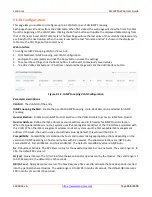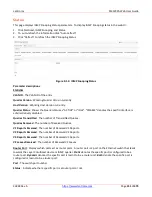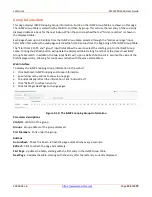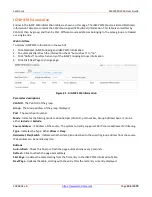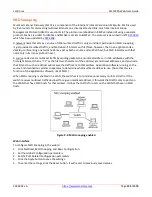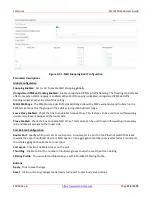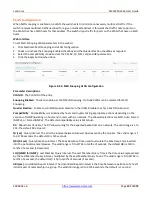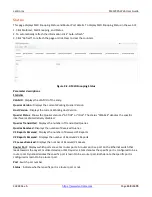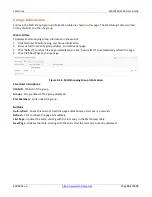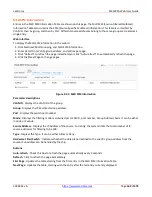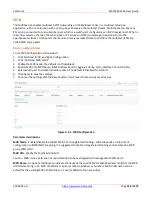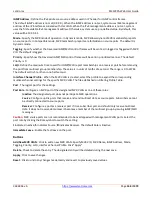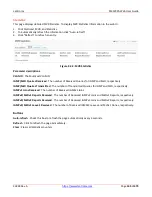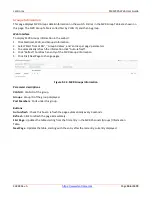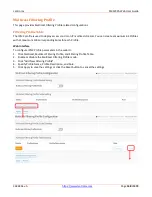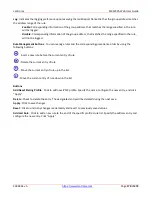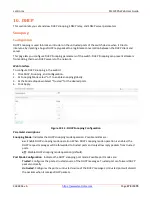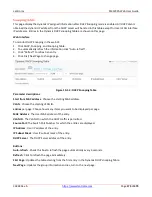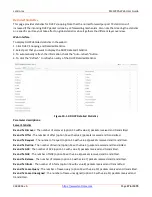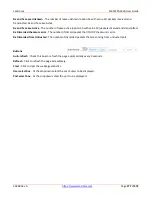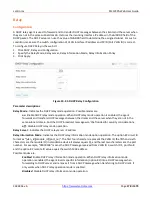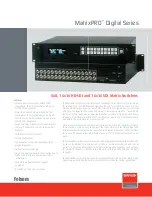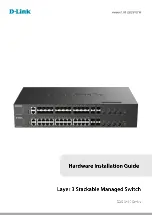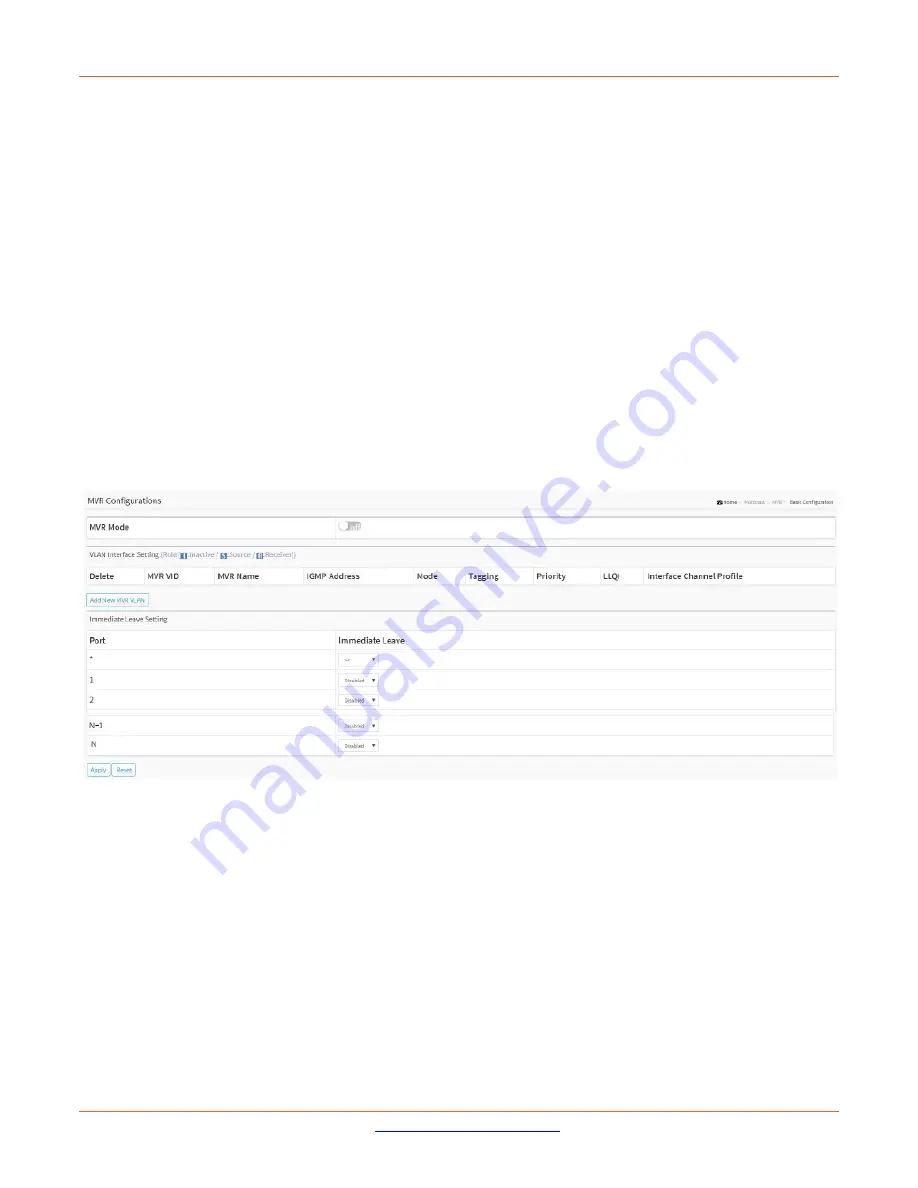
Lantronix
SM12XPA Web User Guide
33848 Rev. A
Page
163
of
473
MVR
The MVR feature enables multicast traffic forwarding on the Multicast VLAN. In a multicast television
application, a PC or a television with a set-top box can receive the multicast stream. Multiple set-top boxes or
PCs can be connected to one subscriber port, which is a switch port configured as an MVR receiver port. When a
subscriber selects a channel, the set-top box or PC sends an IGMP join message to Switch A to join the
appropriate multicast. Uplink ports that send and receive multicast data to and from the multicast VLAN are
called MVR source ports.
Basic Configuration
To set MVR Configuration in the web UI:
1.
Click Multicast, MVR, and Basic Configuration.
2.
Click “Add New MVR VLAN”.
3.
Enable the MVR mode; the default is off (disabled).
4.
Specify MVR VID, MVR Name, IGMP Address, Mode, Tagging, Priority, LLQI, Interface Channel Profile.
5.
Select which port to enable Immediate Leave. The default is Disabled for all ports.
6.
Click Apply to save the settings.
7.
To cancel the settings click the Reset button. It will revert to previously saved values
Figure 9-3.1: MVR Configuration
Parameter descriptions
:
MVR Mode
: Enable/Disable the Global MVR. The Unregistered Flooding control depends on the current
configuration in IGMP/MLD Snooping. It is suggested to enable Unregistered Flooding control when the MVR
group table is full.
MVR VID
: Specify the Multicast VLAN ID.
Caution
: MVR source ports are not recommended to be overlapped with management VLAN ports.
MVR Name
: An optional attribute to indicate the name of the specific MVR VLAN. Maximum length of the MVR
VLAN Name string is 32. MVR VLAN Name can only contain alphabets or numbers. MVR VLAN name can be
edited for the existing MVR VLAN entries or it can be added to the new entries.

